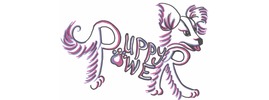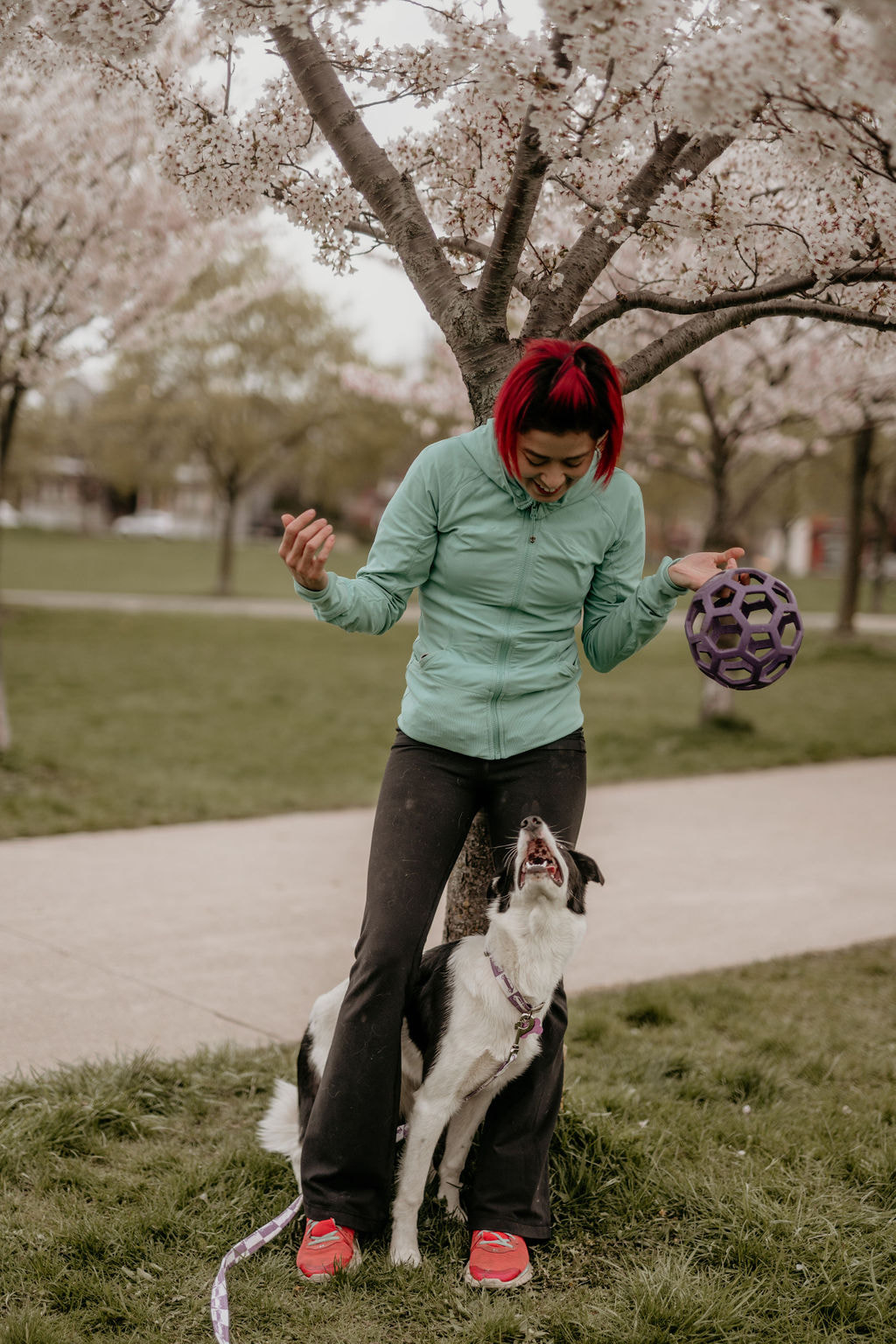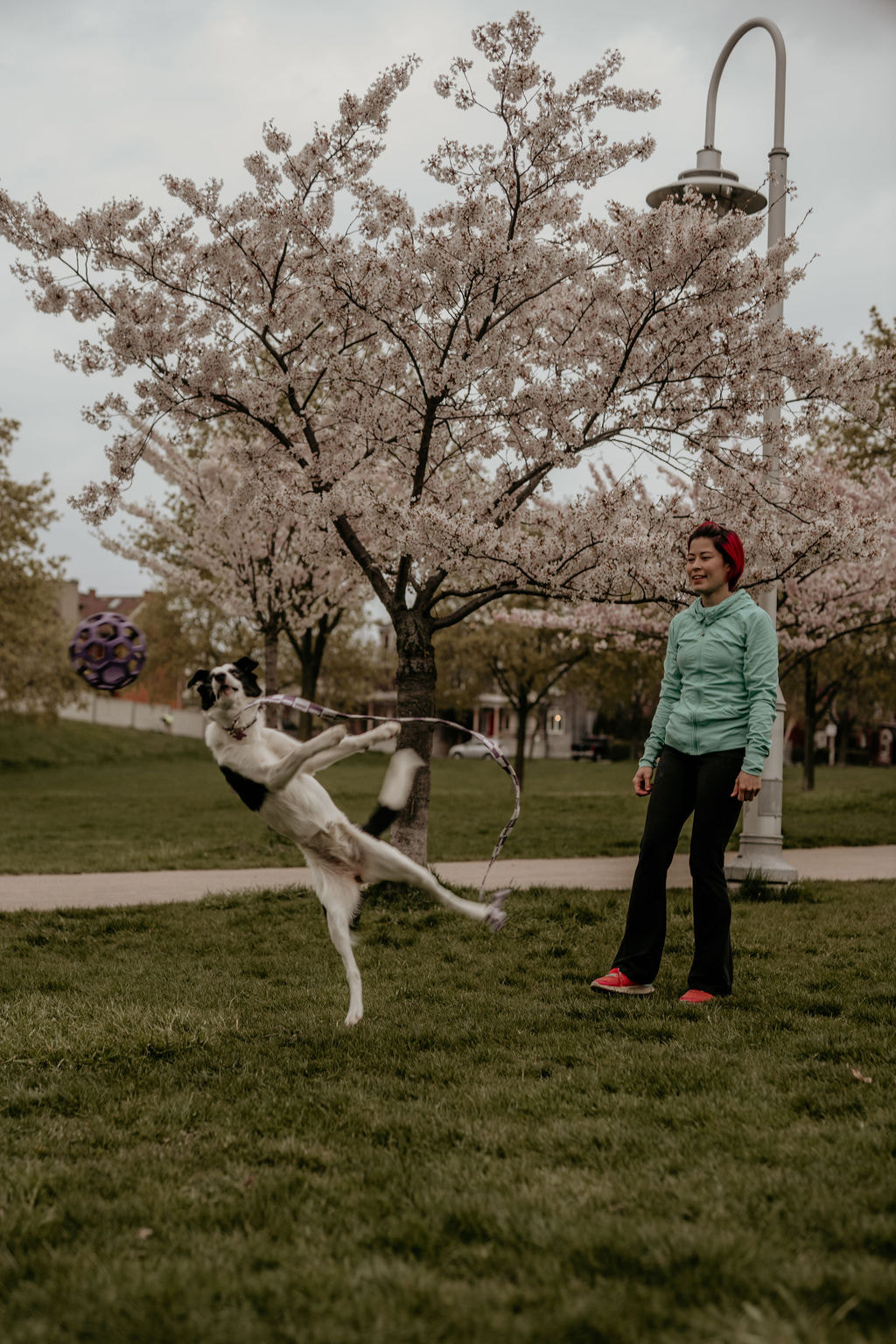|
We all love our dogs, which is all fine and good, but I think what our dogs need from us more than love is to be understood: for what they are, what they need, and what they want; not what we want from them. When I became a dog trainer, I knew I’d be helping dogs by teaching people how to understand the way their dogs think & learn and how to use that knowledge to change behaviour. What I didn’t realize initially was just how big of a challenge it would be to get people to really understand their dogs’ needs, which is a huge piece of the puzzle that usually needs to be figured out before asking for any further behavioural changes. I find that often people want a recipe to follow to make the dog in front of them match the perfect prototypical image they thought their dog would be without the need for ongoing management, when in reality that dog doesn’t really exist. (Although somehow a lot of people seem to think their last dog matched that image, but that’s another rant for another day). I also find that people read too much into the phrase “it’s how they’re raised” and assume we can over-ride genetics with enough training, and I think we do a huge disservice to our dogs when we believe this assumption. For those of you who took and remember genetics: P = G + E (Phenotype = Genetics + Environment). I won’t go into details of all the ways environment can affect gene expression as an organism develops, but I will cut to the chase and say this: Every dog we meet is the result of a number of interactions between the dog’s genetic makeup and the environmental factors that influenced it as it matured (in utero, in critical developmental stages, and beyond), and the way it thinks & acts is constantly influenced by its genetics, the environment and the associations the dog makes on a day to day basis. That doesn’t mean how they are raised doesn’t matter (it is absolutely part of the equation); it means good breeding matters and it also means having the right environmental conditions for your dog to thrive in matters. It also means that sometimes training can’t make a square peg fit into a round hole. We might be able to modify the peg a bit, but a bigger part of my job as a trainer is to help the dog owner modify the hole so it will accommodate that peg. Sometimes we find out that it’s not a fit, and there’s no shame in admitting that and finding a better fit for the dog if that’s the case. But if we’re willing and able to accommodate our dogs and we want to get the most out them, we need to change the environment to meet their needs. And that starts by seeking an understanding of what those needs are.
0 Comments
I don’t know about you but whenever I get a dog, I have a pretty big list of things I would love to do with them. I won’t bore you with the extensive list of all the things I’ve ever dreamt of doing with my dogs, but I will say this: where I am now is not at all where I thought I’d be as a little girl going to dog shows with my dad, dreaming of someday having my very own dog to show. I’m not complaining one bit because the path I am on has really opened my eyes to understanding dogs in a way I think every dog deserves to be understood. I’m thankful for this because I truly believe it’s really important to have this bit figured out before starting to explore all the amazing but potentially stressful things we can do with our dogs.
My first dog of my own ended up being a foster-fail - a dog with fear-aggression that I actually didn’t have a lot of goals for aside from to help him be comfortable living in this crazy human world. What followed was the realization that this is the most important thing we can do for our dogs regardless of the age at which we get them and what our long-term plans for them may be. It’s unfair to ask them to do more when they aren’t comfortable where they are in the first place. My current dogs all have better lives because of this. It’s funny but really not surprising that there are a lot of parallels between good parenting and good dog-ownership. Much like I never want to be that parent nagging & pushing my kid to do activities just because I want for them to be able to do it, I have never been a person to get fixated on what my goals for my dogs were and I have never pushed them to do something just because I wanted it. My utmost goal is to provide them comfort and security, and I constantly look for feedback from them that indicates they are enjoying something new before I commit to signing them up for more. If I could, I would ask every single one of my dogs the same thing we often ask kids: “What do you want to do/be when you grow up?” This is obviously not a practical thing to ask our dogs but what we *can* do is give our dogs opportunities to explore various options at their pace and see if they like it/how far they get with it and constantly look for feedback as to whether they are enjoying it. What I’ve learned I *can* ask my dogs is: “Are you in?” And the incredible thing that usually happens is the more often I step back and wait to see if they opt in for more, the more into it they get, and the more they seem to enjoy it. So what’s the point of this post? It’s not to say you can’t have hopes/dreams for what you want your dog to do/be - but it IS to say it’s important to meet them where they are and get their input at each step of the way. Sometimes the dog in front of us isn’t the dog we thought they would be, and that’s ok. If you start by meeting their needs and providing them with opportunities to try things, while making sure to be their safety net, ensuring they feel safe & secure and building confidence at each step along the way, they will often surprise you with the things they actually *can* do. And usually you’ll be pleasantly surprised that the path you end up on is better than the path you’d originally planned. |
AuthorI am a dog owner and a trainer. Every day I learn something new from my dogs and I hope to share experiences that will help people understand their dogs better. Archives
March 2024
Categories |
© Samantha Dejong, B.Sc, CCUI, CTB.ccs, IPDTA-CDT




